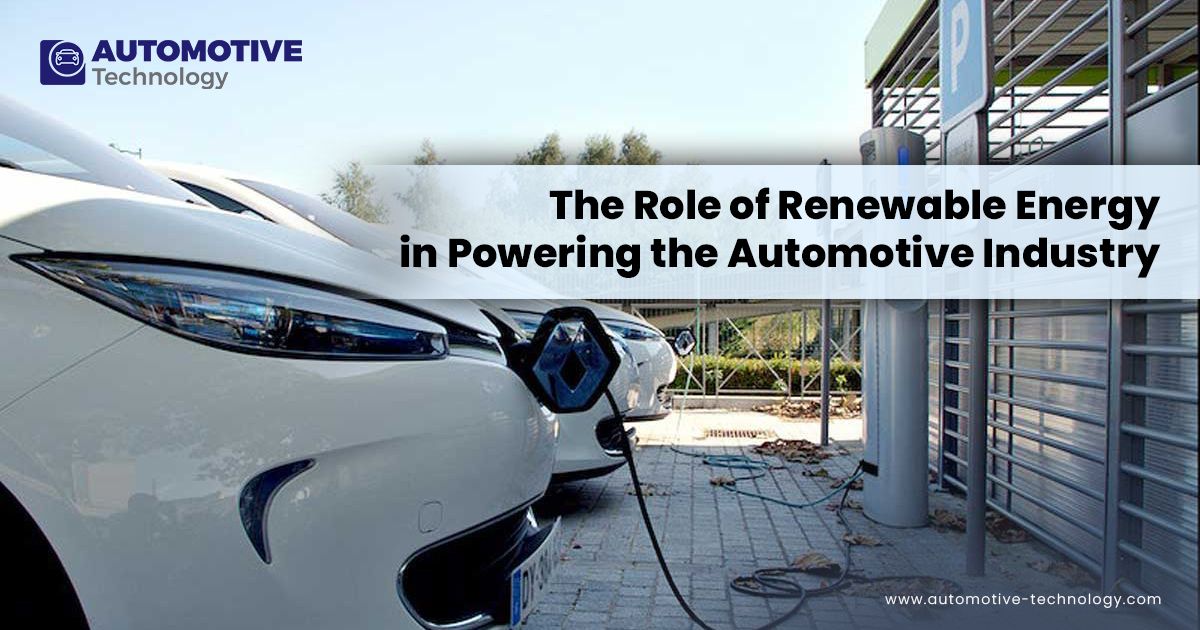Have you ever pulled into a parking lot, seen someone painstakingly back into a spot, and wondered why they bother? It might seem like an extra step, a quirky driving habit, or even a display of superior parking prowess. However, this seemingly simple maneuver is far more than just a preference; it’s a strategic decision rooted deeply in principles of safety, efficiency, and preparedness that can dramatically impact your daily driving experience, especially when it comes to workplace safety. Roughly one in seven vehicle incidents occur in parking lots, highlighting just how crucial these often-overlooked spaces are for accident prevention.
The debate between backing in and pulling forward isn’t merely about convenience for your next grocery run; it holds surprising relevance for overall vehicle and pedestrian safety. What if we told you that the way you park could not only significantly reduce your risk of an accident but also positively influence your safety behavior throughout the entire workday? From the moment you arrive, your parking choice can set a precedent for how you respond to emergencies, manage human factors like fatigue, and even contribute to a broader safety culture. It’s about optimizing your routine, saving precious seconds, and making informed decisions.
In this comprehensive guide, we’re diving deep into the compelling reasons why parking in reverse is often the smarter, safer move. We’ll break down the practical advantages, explore how it mitigates common risks, and reveal how this single habit can empower you with greater control and peace of mind every time you get behind the wheel. So, buckle up and prepare to rethink your parking strategy – because a small change in how you park can lead to monumental improvements in your safety and efficiency.

1. **Enhanced Safety When Exiting** One of the most significant and immediate advantages of backing into a parking spot is the dramatically enhanced safety it provides when you’re ready to leave. Picture this common scenario: you’ve pulled into a spot nose-first, and now, hours later, you’re trying to back out of a busy parking space. Your vision is often severely obstructed by large SUVs, delivery vans, pedestrians, shopping carts, and even landscape features. You’re essentially driving blind, inching out, hoping no one crosses your path, making it a high-risk maneuver. This creates a hazardous situation, where the risk of collision is significantly elevated, especially in high-traffic areas where people and vehicles are constantly in motion.
This traditional method of pulling in forward means you’re effectively reversing into an unknown, dynamic environment when it’s time to depart. The cars parked on either side, often larger than yours, create significant blind spots that obscure your view of oncoming traffic, cyclists, and unsuspecting pedestrians. It’s a moment where every driver feels a jolt of anxiety, needing to rely on a quick glance, audio cues, or the hope that others are paying attention. The challenge is particularly acute in crowded lots like those at shopping centers or schools, where a moment of poor visibility can lead to serious consequences.
By choosing to back in, you cleverly position your vehicle for a clear, unobstructed exit. When it’s time to depart, you can simply pull forward directly into the traffic lane. This forward movement offers you a much better, wider, and clearer view of your surroundings, allowing you to see oncoming vehicles, pedestrians, and cyclists well in advance. As Dr. Elena Martinez, a Traffic Safety Researcher at the National Highway Safety Institute, notes, this method “reduces the likelihood of collisions with pedestrians and other vehicles because the driver has a clear line of sight moving forward, which is more natural and reliable than reversing out into traffic.”
This clear line of sight is paramount in reducing the likelihood of accidents, as it gives you ample time to assess the situation and react safely, making your departure smoother and significantly less stressful. James Thornton, a Senior Driving Instructor at SafeDrive Academy, emphasizes that backing in “significantly decreases the risk of accidents during departure, especially in busy parking lots where visibility is often compromised.” You gain the crucial ability to detect hazards early and respond proactively, transforming a potentially high-risk maneuver into a low-risk one.
Ultimately, enhanced safety when exiting is about control and foresight. Backing in means you’ve taken control of the most vulnerable part of your parking process – the exit – by ensuring optimal visibility and a natural forward driving motion. This simple change improves pedestrian safety, lowers the risk of vehicle collisions, and provides you with the confidence that comes from seeing exactly where you’re going, every single time you leave a parking spot.
Read more about: Navigate Crowded Parking Lots Like a Pro: Essential Strategies for Safe Backing and Avoiding Hidden Obstacles
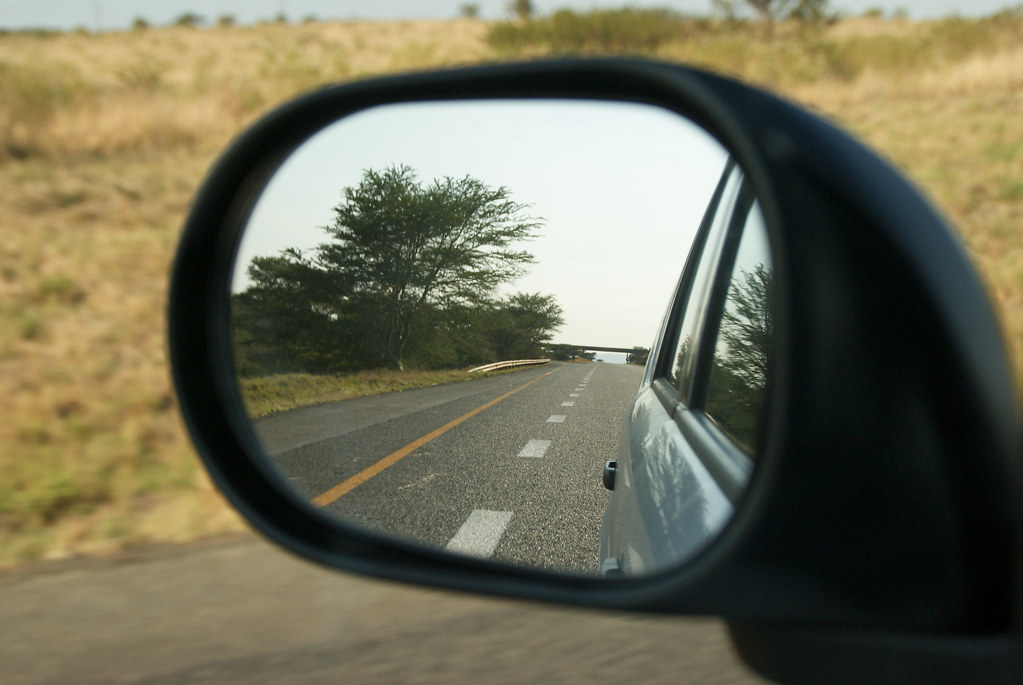
2. **Improved Visibility** Building on the critical theme of enhanced safety, improved visibility stands out as a paramount factor in advocating for backing into parking spaces. When you choose the traditional method of pulling into a spot nose-first, your line of sight is often severely limited as you prepare to reverse out. The vehicles parked on either side, especially larger ones like SUVs or trucks, create expansive blind spots that make it exceptionally challenging to see oncoming traffic, pedestrians, or even small children who might unexpectedly enter your path. This restricted view is a common culprit in parking lot accidents, making the act of backing out a tense and risky affair.
The issue of limited visibility is compounded by the fact that reversing naturally narrows your field of vision, forcing you to rely heavily on mirrors and, in modern cars, backup cameras. While these aids are helpful, they don’t fully replicate the comprehensive view you get when looking forward. The context highlights that “when you pull out of a parking spot, your visibility is often severely limited. Cars parked on either side can create blind spots, making it difficult to see oncoming traffic or pedestrians.” This reality underscores the inherent danger of reversing out of a congested space.
Backing in, however, strategically positions your vehicle so that you drive forward directly into the flow of traffic when departing. This forward-facing orientation provides an expansive, unobstructed, and significantly clearer view of your surroundings. You gain the ability to clearly see what’s coming from both directions, allowing you to accurately assess the situation, judge distances, and merge safely into traffic. This panoramic view drastically minimizes the dangers associated with restricted visibility, a primary cause of parking lot incidents and a source of considerable driver stress.
Imagine yourself in a bustling parking lot during peak hours, with a constant stream of cars, people, and children moving unpredictably. Attempting to back out in such a scenario can be an incredibly nerve-wracking and dangerous ordeal, as you’re constantly battling blind spots and limited reaction time. But by having your vehicle backed in, you can simply pull forward with confidence, making your exit not only smoother and faster but, crucially, much safer. This proactive approach to parking empowers you with superior situational awareness, reducing the risk of collisions and granting you invaluable peace of mind.
Linda Chen, an Automotive Safety Consultant at Urban Mobility Solutions, explains that “The safety advantage of backing into parking spots lies in the improved situational awareness it affords upon exit. Drivers can better anticipate oncoming traffic and pedestrians, which is crucial in congested urban environments.” This enhanced ability to see and react contributes significantly to reducing the chance of accidents, making your parking experience less stressful and more secure. Prioritizing visibility through reverse parking is a simple yet profoundly effective safety strategy.
Read more about: Unpacking the Past: 14 Vintage Car Features Modern Driving Left Behind (And Why We Miss Them)

3. **Easier and Faster Exit** Let’s be honest: nobody enjoys the frustrating and often time-consuming dance of trying to maneuver out of a tight parking spot, especially when you’re in a hurry. One of the most compelling practical benefits of backing into a parking space is the considerable ease and speed it adds to your departure. When you’ve positioned your vehicle facing forward, you can simply hop in, start your car, and pull straight out into the aisle or traffic lane, completely sidestepping the need for complex, multi-point reversing maneuvers that can tie up traffic and test your patience. This streamlined departure saves you precious time and a significant amount of stress, directly contributing to a more efficient daily routine.
This advantage becomes particularly pronounced in scenarios where time is of the essence, or when the parking lot is grappling with heavy traffic and congestion. Think about those moments when you’re already running late for an important appointment, or simply yearning to get home after a demanding day at work. The ability to pull forward and go, without the added anxiety of inching backward into moving vehicles or unsuspecting pedestrians, is nothing short of a game-changer. It reduces both the mental load and the physical effort required for departure, transforming what could be a stressful exit into a quick, smooth, and predictable action.
The ease of exit also extends beyond simply saving your personal time; it positively influences the overall flow of traffic within the parking area. When a majority of drivers are able to pull forward smoothly out of their spaces, it significantly minimizes the bottlenecks, delays, and chaotic congestion that frequently occur when multiple vehicles are simultaneously attempting to back out. This collective efficiency not only benefits you directly but also contributes to a more harmonious, less frustrating, and more predictable environment for everyone else navigating the parking lot. The context emphasizes that “when everyone is pulling forward, it reduces congestion and makes the entire parking process more efficient.”
Furthermore, this forward exit capability contributes to better decision-making under pressure. When you know your exit will be straightforward, you’re less likely to feel rushed or panicked, even if you are in a hurry. This reduces the cognitive strain associated with navigating complex situations, allowing you to remain calmer and more focused on your surroundings. It’s a fundamental aspect of optimizing your driving routine, transforming a potentially hazardous stage of your journey into a straightforward, predictable action.
Ultimately, the easier and faster exit offered by backing in is a clear demonstration of how a small, deliberate parking choice can yield widespread benefits in terms of both personal convenience and collective traffic efficiency. It embodies the Lifehacker principle of optimizing processes to save time and reduce stress, making your daily commute or errand run a notably smoother experience.
Read more about: Unlocking Instant Power: 8 Essential DIY Upgrades for Your Car’s Performance
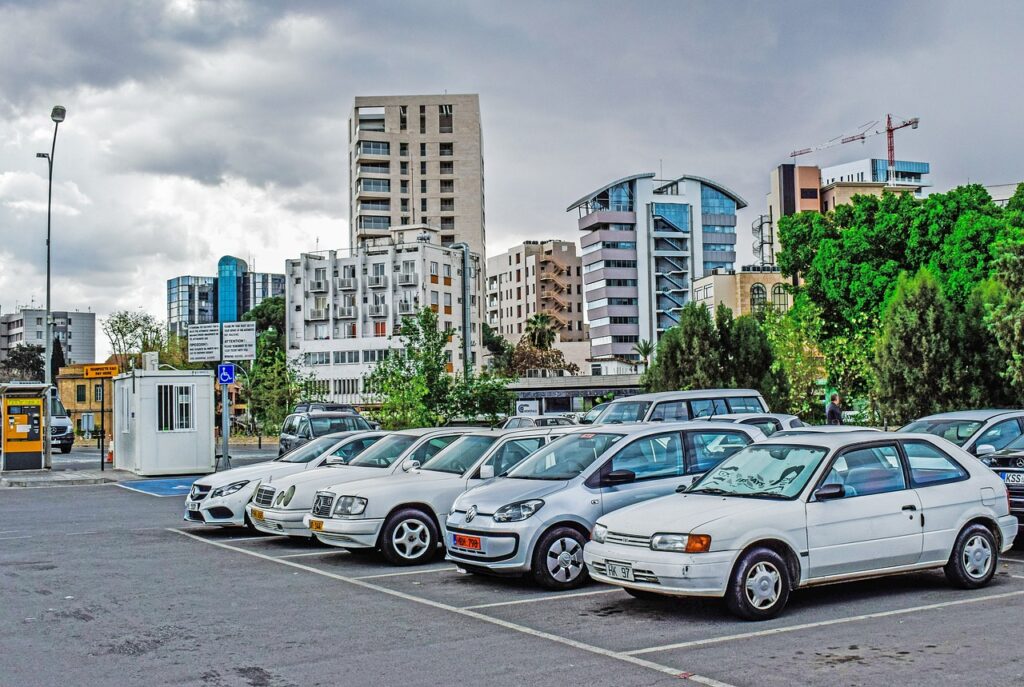
4. **Emergency Preparedness** Another profoundly compelling reason to make backing into parking spaces your go-to method is the crucial advantage it offers in terms of emergency preparedness. In any emergency situation, whether it’s a personal urgent matter, a medical crisis requiring a rapid hospital trip, or a larger site-wide evacuation scenario, every single second can count. Panic and rushing are almost always unwelcome companions of emergencies, which is precisely why effective emergency plans aim to keep people as calm and orderly as possible. The ability to leave quickly, without the added complication of reversing, can be life-saving.
If the need to evacuate is urgent, or if you suddenly need to rush a loved one to the hospital, having your car already backed in means you can literally jump into your vehicle, start the engine, and drive straight out without any delay. You certainly don’t want to find yourself stuck waiting for someone else to slowly and cautiously back out of their spot, especially when you are in a panicked and rushed state yourself. This immediate forward departure capability ensures that critical moments aren’t wasted struggling with a parking maneuver, allowing for a swift, unhindered, and ultimately safer exit. The context explicitly states, “If you need to leave quickly, backing in allows you to jump into your car and drive straight out without any delay.”
This preparedness extends beyond just major emergencies, applying equally to more common, mundane problems that can arise unexpectedly. For instance, if your car unexpectedly won’t start due to a dead battery, or if you need a jump-start from another vehicle, being backed in usually makes it considerably easier to access your engine for a boost. If you had pulled forward nose-first, your engine compartment might be harder to reach, requiring complex maneuvers from the boosting vehicle or even repositioning your own car, adding unnecessary frustration and significant delay to an already inconvenient situation.
Furthermore, consider the broader context of an emergency evacuation from a workplace. Fire evacuation plans and other emergency preparations are meticulously designed to facilitate quick, orderly exits. If employees have backed into their spaces, the entire parking lot can clear out much more efficiently, reducing congestion and the potential for additional accidents caused by stress and haste. This proactive parking strategy contributes directly to the effectiveness of a site’s overall emergency response plan, underscoring its importance in safeguarding lives and property.
This foresight means you’re not just prepared for the worst-case scenario, but also for those everyday hiccups that can disrupt your routine and cause unnecessary stress. By consistently backing into your parking spot, you’re embracing a proactive stance that ensures you’re always ready for immediate departure, making you not just a safer driver, but a more resilient and prepared individual in all aspects of your life. Being prepared for any situation is always a smart move, and this simple habit is a cornerstone of that preparedness.
Read more about: The Critical Winter Car Care Mistakes Drivers Must Avoid for a Safer Season
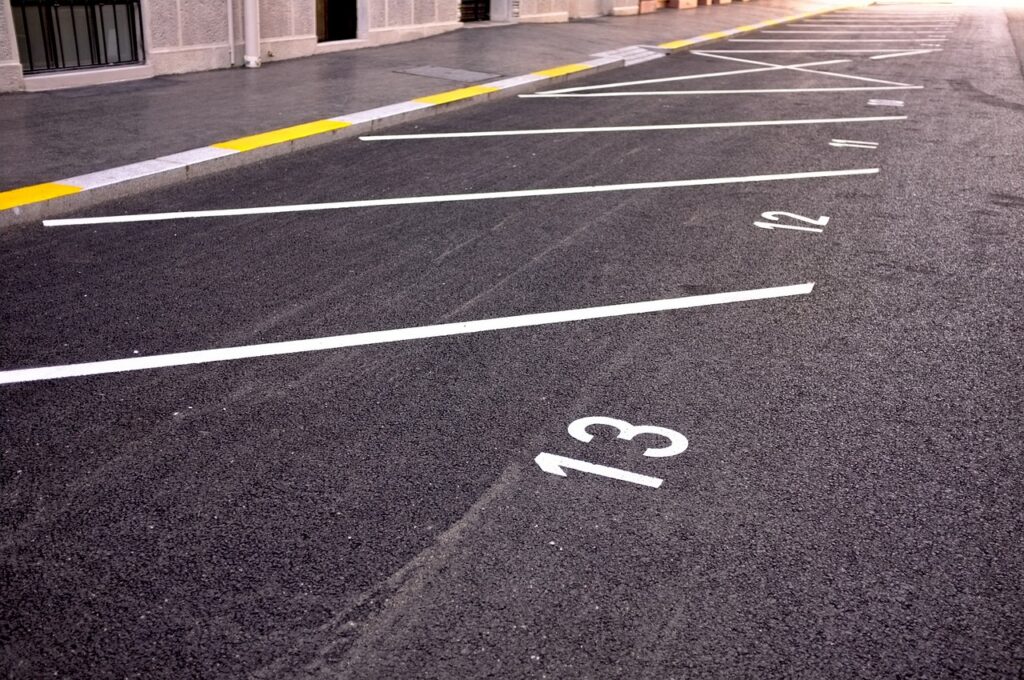
5. **Contingency for Human Factors** Parking lots, despite their seemingly low-speed environment, are surprisingly frequent sites for vehicle incidents, with roughly one in seven vehicle incidents occurring in these spaces. A significant portion of these unfortunate events are directly attributable to human factors. The time of day you engage in a reversing maneuver plays a surprisingly critical role in your safety. Drivers inherently operate with a smaller and more restricted field of vision when backing up, making it an intrinsically more challenging and vulnerable maneuver where more can, and often does, go wrong. Therefore, it makes perfect logical sense to engage your vehicle in reverse when your cognitive functions are at their sharpest and your attention is most readily available.
Consider the stark difference in your mental and physical state when you arrive at work compared to when you leave. By the time the workday concludes, it’s highly probable that you’ll be under the pervasive influence of one or more adverse human factors. These can range from palpable fatigue after a long, arduous day, frustration stemming from workplace challenges, or simply the powerful, almost irresistible urge to rush home to personal commitments and family. Attempting a complex, vision-limited backing-out maneuver when you are already tired, distracted, or in a hurry significantly amplifies the inherent risk of an accident, given that the majority of many traffic issues – like fatal crashes – are indeed caused by human factors that effectively distract drivers.
The context explicitly highlights this by stating, “By the time you leave work you’re likely to be under the spell of one or more human factors, including fatigue, frustration, and the urge to rush home.” It’s a stark reminder that our capabilities diminish throughout the day. Encouraging employees, or indeed, adopting the personal habit of backing in when you arrive at work cleverly and proactively circumvents this heightened risk. By performing the backing maneuver at the start of your day, when your focus, energy levels, and overall awareness are typically at their peak, you drastically cut down on the number of times you’ll have to reverse your vehicle when you are most susceptible to impaired judgment and reduced reaction times.
This proactive approach ensures that the more challenging and vision-intensive part of the parking process—reversing—is handled when your cognitive abilities are at their peak. Consequently, it substantially reduces the likelihood of incidents caused by diminished attention, heightened frustration, or the universal desire to get home quickly. It empowers you to tackle the more demanding aspect of parking when you are most equipped to handle it safely, thereby mitigating the risks associated with impaired human performance at the end of a long day.
Moreover, integrating this habit as a company-wide practice can have profound effects on overall workplace safety culture. By recognizing and addressing human factors at the outset of the day, companies signal a commitment to employee well-being that extends beyond the office walls. It’s a low-cost, high-impact strategy that actively combats the pervasive influence of human error, making parking lots, and by extension, the entire workplace, considerably safer for everyone.
Read more about: Beyond the Pixels: An In-Depth Look at the Grueling Hours and Enduring Stress Shaping Game Development Today
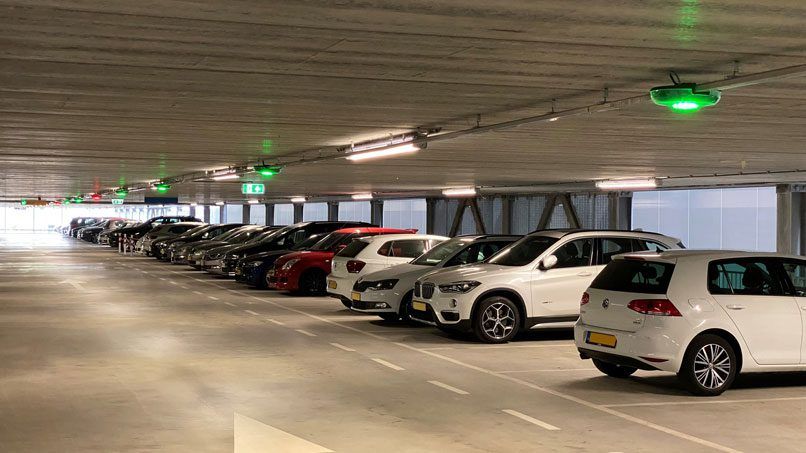
6. **Thinking About Safety** Beyond the immediate operational benefits, the simple act of backing into a parking space serves a remarkably powerful, often subconscious, purpose: it naturally triggers and reinforces thoughts about safety. Many forward-thinking companies wisely implement proactive practices like ‘toolbox talks’ at the beginning of each shift, specifically designed to ensure that safety remains at the forefront of everyone’s mind before critical work commences. Parking in reverse can function in a remarkably similar, yet entirely organic way, acting as a small, personal, and impactful safety briefing right when you arrive at your destination.
The very act of maneuvering your vehicle in reverse, rather than just pulling straight in, naturally forces you to be more deliberate, cautious, and intensely attentive to your surroundings. It’s a maneuver that demands focus and a heightened sense of spatial awareness. This inherent demand for care prompts a momentary, yet profound, reflection on why this extra vigilance is necessary – precisely because it’s recognized as a fundamentally safer way to park. This active engagement with the concept of safety, right at the start of your day, is an invaluable mental reset that sets a positive tone for all subsequent activities. As the context notes, “anything that gets employees to think about safe behavior is a good thing. Especially when it happens right when they arrive at work.”
Moreover, this habit is inherently visual and, quite wonderfully, contagious within a community or workplace. When more and more people consciously start backing into their spots, it creates a palpable visual cue for everyone else in the vicinity. Colleagues, visitors, and even new employees can observe this consistent, safety-oriented behavior. The increasing adoption acts as both a subtle motivation and a consistent, gentle reminder to prioritize safety in their own actions. As the practice becomes more widespread, it begins to solidify into a collective habit, reinforcing its importance.
The visual nature of this habit also contributes to establishing a strong safety culture. Once backing in becomes the accepted norm, visitors and new employees quickly take note of this consistent practice. It sends an immediate, clear message that the company, or indeed the individual, takes safety seriously and embeds it into everyday routines from the very first interaction upon arrival. This visible commitment to safety can inspire others to adopt similar mindful practices, creating a ripple effect that elevates overall safety awareness.
Ultimately, integrating backing into parking spots into your routine isn’t just about a single maneuver; it’s about cultivating a deeper safety mindset. It’s a proactive step that transforms a mundane act into an opportunity for conscious safety reflection, influencing not just your parking behavior but potentially your entire approach to safety throughout your day. This continuous reinforcement helps embed safety as a core value, making you a more attentive and responsible driver and citizen.
Read more about: The Revival Circuit: 12 Forgotten Concepts That Changed the Automotive Industry
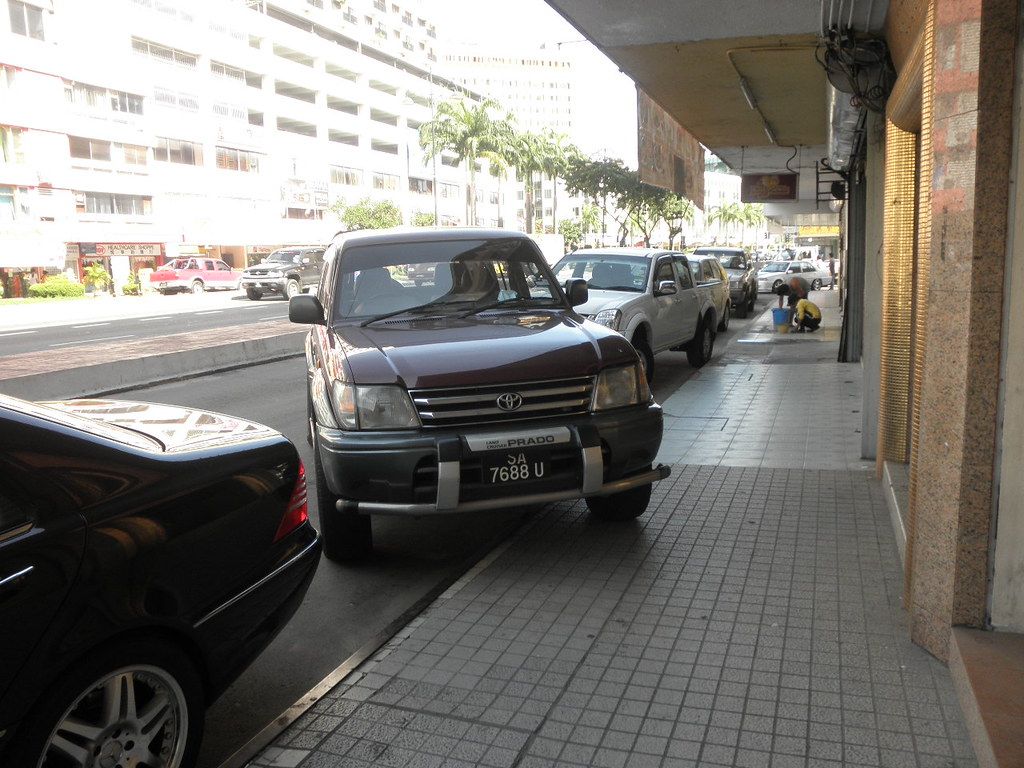
7. **Cultivating Keystone Safety Habits**Beyond the immediate advantages of a safer exit and clearer vision, backing into a parking space offers a profound, long-term benefit: it can serve as a powerful ‘keystone habit.’ As noted by habit experts like Charles Duhigg, these are small, seemingly insignificant behavioral changes that possess the remarkable ability to trigger a cascade of seemingly unrelated, positive outcomes across various aspects of your life. Think of it like making your bed in the morning; this simple act has been shown to pave the way for better exercise habits, demonstrating how a minor adjustment can be the catalyst for broader, more impactful changes in your daily routines and overall discipline.
Getting into the consistent habit of backing into your parking spot isn’t just about how you park your car; it’s often the foundational first step in a much larger, transformative shift in an individual’s or even a company’s safety culture. This isn’t just theoretical; SafeStart’s safety consultants consistently observe this phenomenon at client sites. They report returning a year after recommending that management encourage employees to back into parking spaces, only to find a dramatic, measurable improvement in the overall safety culture. Time and again, on-site management attributes this positive behavioral change, starting with reverse parking, to addressing wider safety issues across the organization.
Once this initial keystone habit of backing in is firmly in place, it creates fertile ground for building upon it by adding subsequent, related safety steps. For instance, because a person is already in a safety-conscious mindset from the deliberate act of backing into their space, integrating a secondary habit like ‘testing footing before committing full weight to avoid slipping when exiting a vehicle’ becomes significantly easier and more natural. You’re already primed to think about safety, making the adoption of additional precautions a logical progression rather than an isolated effort.
This principle of layering habits can continue to expand your safety routine. You could then add ‘look both ways before crossing the parking lot,’ and before you know it, you’ve established a comprehensive, intuitive routine that actively gets employees into a safety-first mindset as soon as they arrive at work. Taking this even further, you can extend this powerful habit beyond the workplace, encouraging backing in at home too, which is where a significant number of unintentional injuries frequently occur. This simple, no-cost practice is a valuable tool in combating distracted driving and fostering a pervasive culture of safety.
Read more about: Navigate Crowded Parking Lots Like a Pro: Essential Strategies for Safe Backing and Avoiding Hidden Obstacles
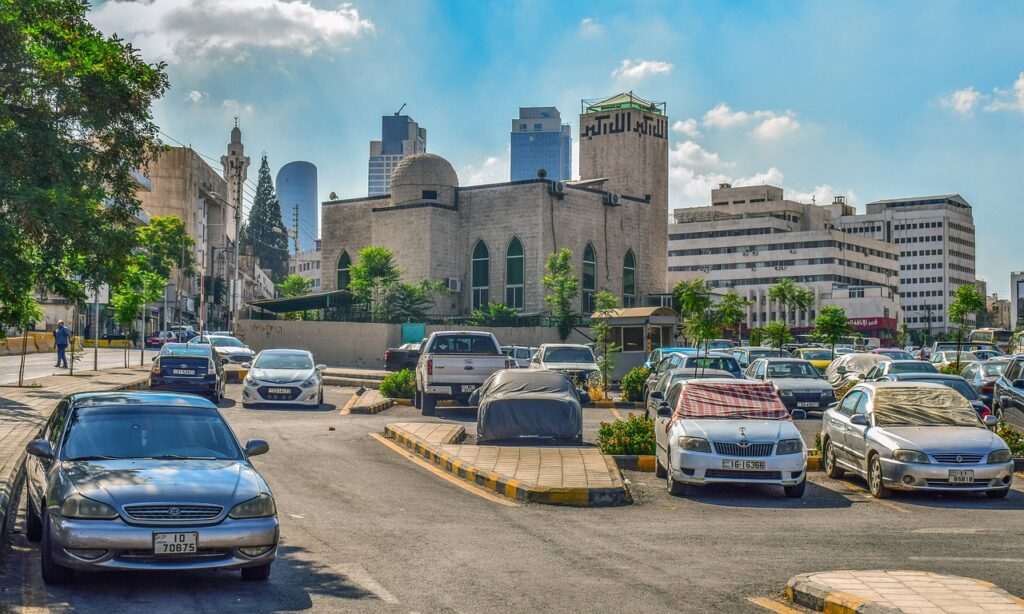
8. **Aligning with Professional Driving Standards**If you’ve ever observed professional drivers in action—whether they’re delivery drivers meticulously navigating urban streets, law enforcement officers maintaining order, or emergency responders rushing to a critical incident—you might have noticed a consistent pattern: they almost invariably back into their parking spaces. This isn’t just a quirky personal preference; it’s a deeply ingrained practice, often a core component of their rigorous training and standard operating procedures. These professionals, whose livelihoods and the safety of others depend on their driving prowess, understand and prioritize the profound safety and efficiency benefits that backing in provides in their demanding daily routines.
By choosing to adopt this same practice in your everyday parking, you are essentially aligning yourself with the gold standard of driving best practices. You’re following the lead of individuals who drive for a living and for whom safety isn’t just a concern, but the absolute top priority. This isn’t about mere imitation; it’s about recognizing that professional standards are meticulously developed and implemented for very compelling reasons, usually rooted in extensive experience, accident prevention data, and optimizing operational effectiveness under pressure. Their methodologies are designed to minimize risk and maximize preparedness, lessons we can all apply to our own driving habits.
Embracing professional driving standards means adopting a proactive stance that consistently seeks the safest and most efficient approach to every driving maneuver, including parking. It acknowledges that a small, deliberate act like backing into a spot contributes significantly to a larger framework of responsible driving. This disciplined approach can elevate your own driving skills and cultivate a mindset of continuous improvement, making you a more competent and safer driver overall. It’s about consciously choosing to drive with the same level of care and foresight that distinguishes experts in the field.
When you consistently practice backing in, you’re not just parking a car; you’re reinforcing a commitment to safety that resonates with the principles professional drivers live by. This commitment doesn’t just benefit you; it contributes to a safer environment for everyone in the parking lot. It’s a tangible way to demonstrate that you take driving seriously, and that you are willing to implement proven strategies to mitigate risks and ensure smooth, predictable movements, reflecting the high standards set by those who operate vehicles in critical roles.
Read more about: The Mechanic’s Ultimate Guide: 8 Pickup Trucks That Defy Breakdowns and Dominate the Road
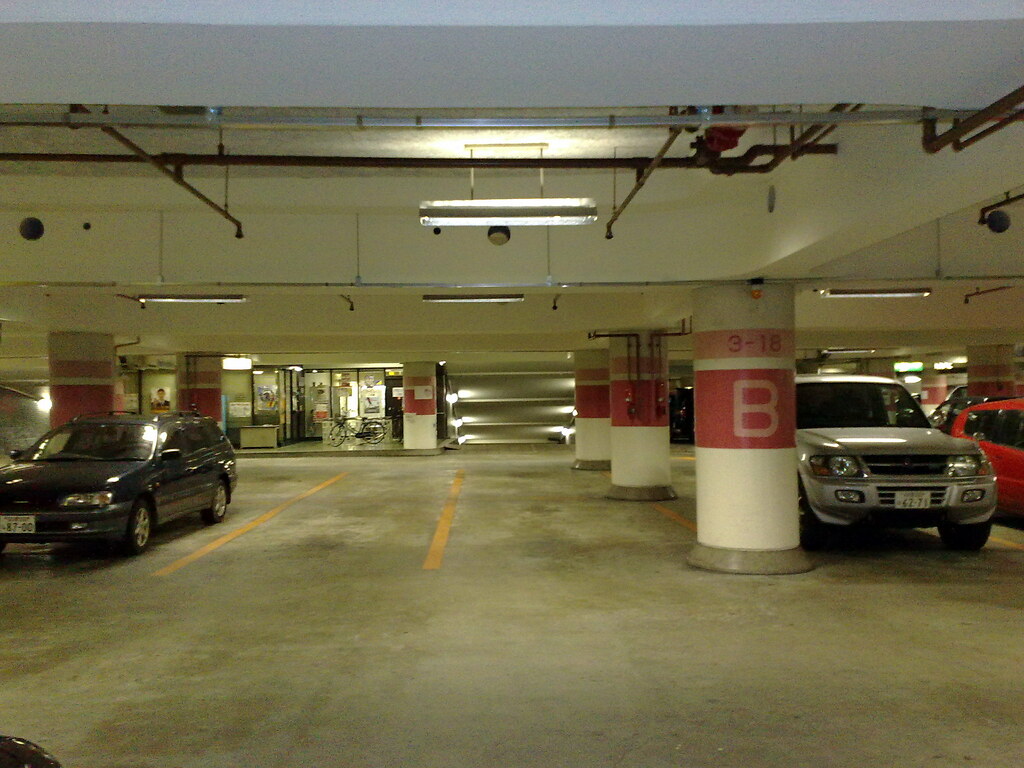
9. **Enhancing Vehicle Security and Accessibility**Beyond the immediate safety implications for drivers and pedestrians, backing into a parking spot offers notable advantages in terms of vehicle security and accessibility, a benefit often overlooked in the discussion of parking techniques. When your vehicle is parked with its front facing outwards, the engine compartment, which is often the target for tampering or theft, becomes significantly more visible and accessible to passersby. This increased visibility acts as a natural deterrent to opportunistic thieves or vandals, making your vehicle a less appealing target for illicit activities because any attempts at interference are more likely to be noticed.
Furthermore, the ability to execute a quick exit, which is a core benefit of backing in, can also serve as a powerful theft deterrent. Thieves often look for vehicles that are difficult or time-consuming to maneuver out of a spot, as this provides them with more time to operate and reduces their risk of being caught. If a vehicle can be driven forward and out of a space almost instantly, it presents a higher risk for a potential thief, potentially making them reconsider their target in favor of a less accessible option. This strategic positioning inherently enhances your vehicle’s overall security profile within a parking environment.
This benefit extends to more practical, everyday accessibility needs as well. In certain scenarios, having your vehicle backed in means the trunk or rear hatch is positioned closer to sidewalks, pedestrian walkways, or designated loading zones. This alignment significantly facilitates safer and more efficient loading or unloading of passengers, groceries, equipment, or any other cargo. You avoid the awkward and potentially hazardous maneuvering required to align the rear of your car with a convenient loading point if you had pulled in nose-first, thereby streamlining your tasks and reducing physical strain.
Ultimately, backing into a parking spot translates into a multifaceted improvement for your vehicle. It’s not merely about safeguarding against collisions; it’s about adopting a practice that contributes to a more secure vehicle less prone to tampering or theft, and one that simplifies everyday logistics. This strategic parking choice offers a peace of mind that comes from knowing your vehicle is not only safer to drive but also better protected and more convenient for your needs.
Read more about: Smart Choices for the Golden Years: 12 Top SUVs Retirees Should Consider Buying in 2025
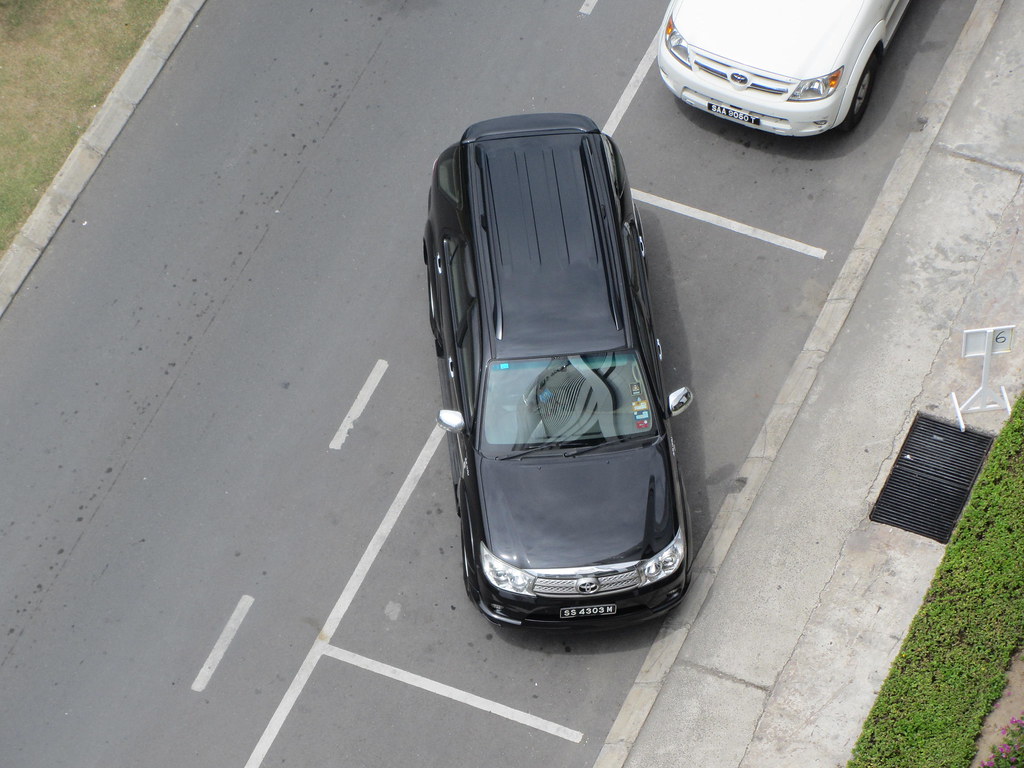
10. **Leveraging Vehicle Maneuverability**One of the fascinating, yet often unrecognized, reasons why backing into a parking space proves to be a superior method lies in the fundamental design and maneuverability of a vehicle itself. Your car is inherently more agile and controllable when moving in reverse than it is when maneuvering in forward gear, particularly at low speeds and within confined spaces. This principle is vividly illustrated by the design of forklifts, which famously steer by their rear wheels precisely because it grants them exceptional maneuverability in tight industrial environments. Understanding this inherent mechanical advantage can fundamentally change how you approach parking.
When you engage your vehicle in reverse, the steering axle (typically the front wheels in most cars) becomes the pivot point, allowing the rear of the car to swing with remarkable precision. This characteristic grants you greater control over the vehicle’s trajectory and positioning as you guide it into a parking spot. It means you can often tuck your car into a tight space more easily and with fewer adjustments than if you were trying to pull in forward. The enhanced ability to articulate the vehicle allows for more accurate placement and reduces the likelihood of scraping adjacent cars or curbs, a common frustration in crowded lots.
This superior maneuverability directly contributes to a more efficient and less stressful parking routine. Instead of making multiple, often awkward, forward-and-backward adjustments to get perfectly aligned when pulling in nose-first, backing in allows for a smoother, more deliberate entry. While it might feel counter-intuitive initially, embracing the vehicle’s natural ability to maneuver expertly in reverse ultimately saves time and reduces the mental load associated with precision parking. It transforms a potentially challenging task into a more manageable one, especially in high-density parking areas.
By consciously choosing to leverage your vehicle’s inherent design advantage, you are optimizing the parking process itself. It’s about working *with* your car’s mechanics, rather than against them, to achieve the best possible position in the space. This insight empowers you to park not just more safely, but also with a greater sense of confidence and command, knowing you are employing the most effective technique for controlled placement. It’s a smart application of engineering principles to everyday driving, ensuring a pristine park every time.
Read more about: Beyond the Hype: A Consumer’s Definitive Guide to Small SUVs, Value, and Smart Buying
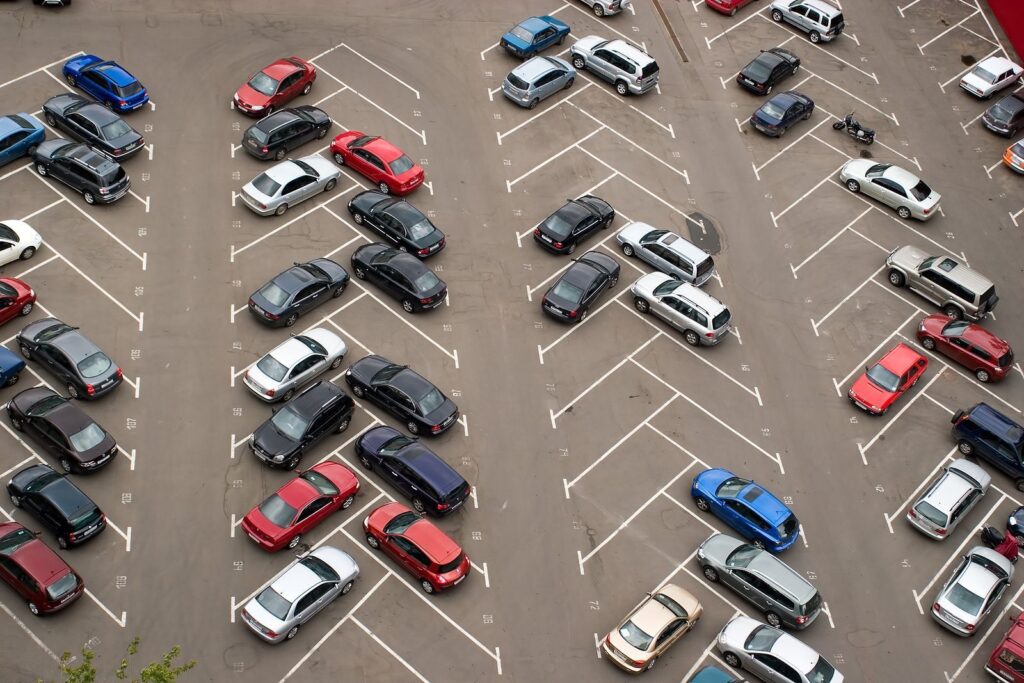
11. **Understanding and Addressing Potential Downsides**While the many advantages of backing into parking spaces are clear, a balanced Lifehacker approach acknowledges that it’s not without challenges. Understanding these isn’t to deter the practice, but to empower drivers to make informed decisions and adapt their strategy for maximum safety and efficiency in any given scenario.
One common drawback is that backing in often ‘requires more maneuvering’ than simply pulling in headfirst. This increased need for precision and control can be demanding, especially for new drivers. Mastering it requires practice and patience, and the initial entry might feel slower, particularly under pressure in a busy lot. Time and skill are certainly factors here.
Another significant consideration is the ‘potential for accidents’ during the backing-in process itself. Reversing inherently carries a higher risk due to a naturally limited field of vision. It’s paramount to exercise extreme caution, diligently checking all mirrors, scanning blind spots, and utilizing backup cameras. Pedestrians or obstacles can appear unexpectedly, making constant vigilance your most critical tool. Modern tech assists, but it’s no replacement for your own observation.
Furthermore, there are situations where backing in is ‘not always practical.’ If you need easy access to a large trunk item, or if passengers require assistance, pulling in nose-first might be more convenient. Some angled parking spaces are also optimized for forward entry, making reverse parking awkward or unsafe. The key is to assess the immediate environment and your specific needs, then choose the safest and most efficient method for that moment.
By understanding these potential drawbacks, you become a more adaptable and intelligent driver. This knowledge allows you to navigate exceptions, practice to overcome skill gaps, and integrate reverse parking as an effective, context-dependent safety strategy. It’s about mastering the art of the informed choice, optimizing your parking habits for every situation.
Read more about: Navigating the Electric Future: Our Expert Picks for the Top 12 EVs You Can Buy Right Now
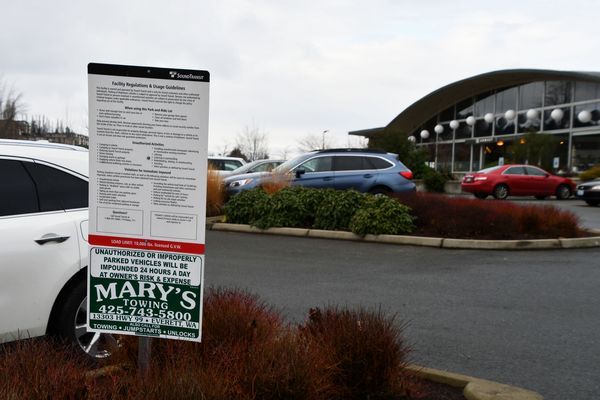
12. **Mastering the Backing-In Technique for a Safer, More Efficient Routine**After exploring the compelling ‘why’ behind backing into parking spots, the next step for any lifehacker is embracing the ‘how.’ Adopting this practice means making it a seamless, confident part of your daily driving repertoire. With dedicated practice, you can transform into a pro who executes the maneuver with precision and ease, establishing a consistently safer and more efficient parking routine.
Begin by clearly signaling your intent. Your turn signal provides a crucial heads-up to others. Next, strategically position your vehicle by driving past the space until your rear bumper aligns roughly with the car two spaces ahead. This setup allows ample room to swing in effectively. Most importantly, before reversing, thoroughly check your surroundings: mirrors, blind spots, and confirm your path is clear.
Once clear, engage reverse and back up slowly and smoothly. Use mirrors and your backup camera as guides, but always physically scan for anything missed. Turn your steering wheel to guide the rear of your car, making small, controlled adjustments. Patience and precision are key; steady movements are better than rushed corrections. As you enter, gradually straighten your wheel to center your vehicle, ensuring proper spacing.
Mastering this technique deeply intertwines with psychological benefits. The conscious effort instills a powerful sense of control and preparedness. Executing a perfect back-in job, especially in a tight space, provides satisfaction, boosting driver confidence. This enhanced confidence reduces stress and gives you greater command over your driving environment, making every parking experience more positive and secure.
Ultimately, consistent practice makes this technique second nature. The more you back into spots, the more intuitive it becomes. This dedication to a safer, more efficient parking method reduces accident risk, smooths your routine, and reinforces a proactive, safety-conscious mindset beyond the parking lot. Embrace the challenge, enjoy the benefits, and drive safer, one perfectly backed-in spot at a time.
In our fast-paced world, the act of parking often gets overlooked. Yet, the choice between backing in and pulling forward is a strategic decision with far-reaching benefits for personal safety, vehicle security, and workplace culture. From enhancing visibility and reducing human error to fostering keystone safety habits and aligning with professional standards, the advantages of reverse parking are undeniably compelling.
While it demands initial focus and practice, the dividends—reduced stress, increased confidence, and a significant decrease in accident risk—are well worth the investment. By adopting this simple yet powerful habit, you’re not just parking your car; you’re making a conscious choice to drive smarter, live safer, and contribute to a more secure environment for everyone. So, next time you approach a parking spot, consider taking that extra moment to back in. Your future self, and everyone around you, will thank you for it.

